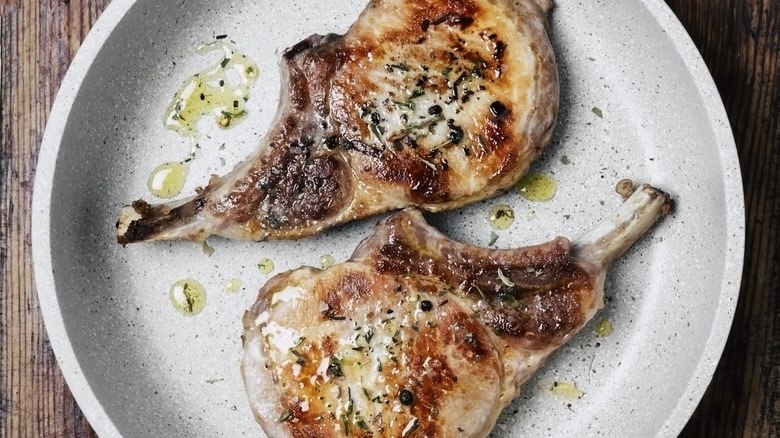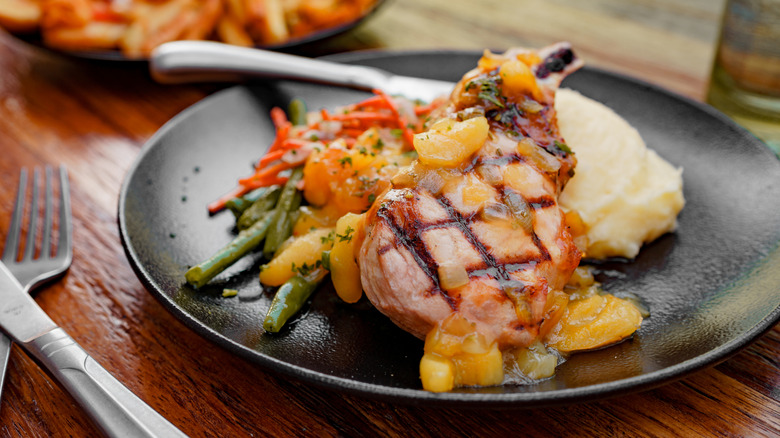Not All Pork Chops Are Cut The Same: What To Know Before Turning On The Oven
If you were raised on pork chops and applesauce, you may feel you know this classic cut of meat well. The truth is, however, that the term pork chop can apply to a range of options,and if you've got burning questions about grilling pork chops (or roasting, or baking, or searing), or the best cut to buy for flavorful steaks, being informed will make a difference to your dinner's taste and texture, and your cooking strategy.
For example, shoulder or blade chops often have darker meat, and are ideal candidates for a low and slow method. A rib or ribeye chop has a bone that looks like a handle, and is leaner than a shoulder chop but not as lean as a loin chop, which can come with a piece of tenderloin attached. This makes the loin chop resemble a t-bone or porterhouse steak, and it can be tricky to prepare as the two parts have slightly different cooking requirements. These are also super lean, so be cautious of cooking for too long to avoid drying out.
Boneless chops or New York pork chops are likely what you imagine a pork chop to be. These are also lean, meaning less flavorful, so you may want to brine or marinate before cooking. A sirloin chop has more bone than most of these cuts, and while it's porky in flavor, the presence of a lot of muscle can make them a little tough; think stews, slow cookers, and braises here, too.
More cuts and what to look for
It may seem like a lot of information, but you don't have to memorize the encyclopedia of pork. There are some ways to narrow down your selection even if the label on the package doesn't get specific. One key is to keep an eye out for cuts that are on the thicker side, as the added heft will provide you with a bit more insurance against overcooking quickly. Additionally, meats that come with the bone still intact also typically have more flavor thanks to the fat that surrounds that bone, and they stand a better chance at retaining moisture and not turning to leather if you happen to overcook them a touch.
When in doubt, it helps to ask your butcher or grocer what they have on hand, or to clarify what's in your package. That way you can make an informed decision. Knowing your cut of pork, along with details like the temperature you should cook your pork chops at, will make a major difference when it's time to prepare this classic dinner.

